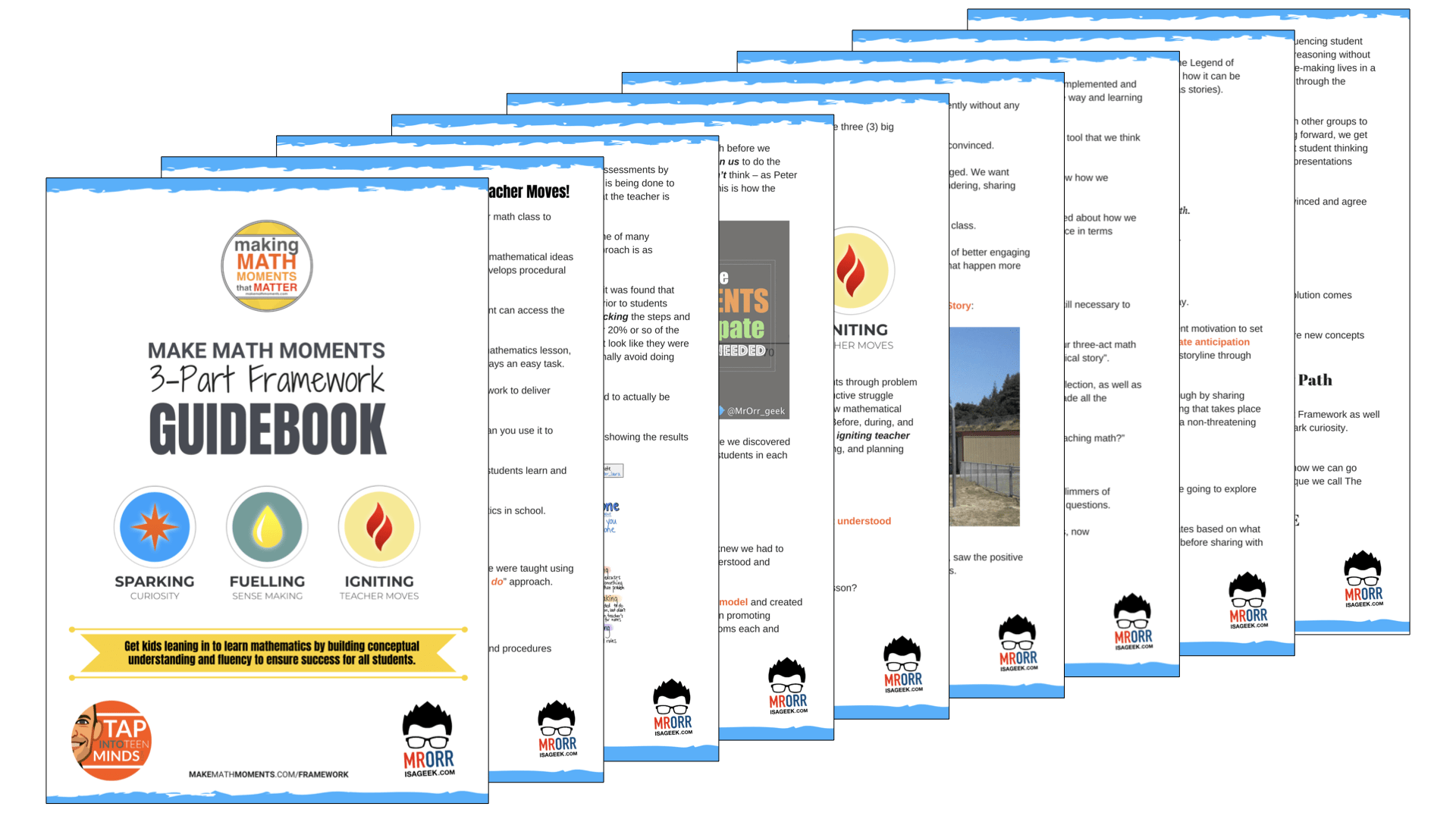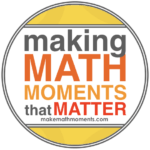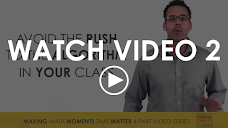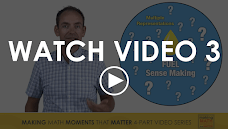Teaching mathematics is complex.
First, there is the content; the “what” we are teaching. From as early as counting and quantity, students are wrestling with some pretty complex ideas including subitizing, abstraction, and unitizing which quickly develops into addition, subtraction, multiplication and division. Then, possibly without even knowing it, kids find themselves in a world of fractions, proportional relationships, algebra and beyond.
Then, there is the pedagogy; the “how” we are going to teach it. Should I use a 3-part math lesson? When should I be doing small group instruction? Should my math class always have kids working in collaborative groups or individually? How often should I give paper and pencil assessments? How long should my units of study be and should it be all one topic or should the math content spiral?
Regardless of whether you are brand new to teaching K-12 mathematics or a seasoned vet, these questions and many more probably still swarm inside your head on a regular basis.
There’s a lot to think about when teaching mathematics and it’s really hard if you try to do it alone. That’s why Jon Orr from MrOrr-IsAGeek.com and I started intentionally collaborating online a few years ago. We were frustrated with how hard we were working to deliver lessons that would have a positive impact on our students both in how they perceived math class and their understanding of the mathematics. At the time it seemed that one day, our lessons would be a huge hit, while on others they’d seem to flop hard.
We were left wondering how we could consistently Make Math Moments That Matter for our students and not just for that lesson or unit, but for weeks, months, or even years.
“We were left wondering how we could consistently Make Math Moments That Matter for our students; not just for that lesson or unit, but for weeks, months, and even years.”
We knew that those “hit” lessons had moments in them that didn’t happen by luck.
There had to be a way we can create these moments on a daily basis – but how?
Making Math Moments That Matter: A Framework
After dissecting our math lessons for over 3 years, we came to realize that we could classify the most important elements required to create memorable math moments in a 3-part framework we call “Making Math Moments That Matter”:
- Spark Curiosity
- Fuel Sense Making
- Ignite Your Next Moves
This framework is not intended to be three specific steps that must be followed in order, but rather three overarching elements that must be present in some form to ensure your lessons make math moments that matter to your students.
Let’s dive into each part of the framework to unpack each element.
Spark Curiosity
Education is notorious for buzzwords and as I’ve explained in the past, the biggest buzzword of them all is engagement. So while we are all striving to engage our students regardless of the content area we teach in, the word engagement has led me to many dead ends when I wasn’t quite sure what type of engagement I was looking for.
If we look at the Google Dictionary definition of curiosity, we find:
- a strong desire to know or learn something.
- a strange or unusual object or fact.
Isn’t that first definition exactly what we’re hoping for in our math classroom?
We know that curiosity is a motivator for learning and it is this curiosity that fuels our natural tendency to make sense of the world around us.
“We know that curiosity is a motivator for learning and it is this curiosity that fuels our natural tendency to make sense of the world around us.”
So how do we spark curiosity in math class?
The best part is that there are infinitely many ways to spark curiosity on a daily basis in the classroom which means that each teacher can pull on their own personality and interests to build in this curiosity. While this sounds super awesome, the hard part is that this means the way in which you spark curiosity in your class may not necessarily look the same as a colleague down the hall.
While there is no exact one-size-fits-all solution, a great place to start is with lesson 1 in the 4-Part Video Lesson Series that Jon and I put together recently. While there are many different ways to spark curiosity, the video series dives into some of our favourite and most effective. We will also dig into other specific elements over the next while on our blogs.
Dive Into The FREE Make Math Moments That Matter Online Workshop!
Fuel Sense Making
Both Jon and I have been fascinated with Dan Meyer’s 3 Act Math structure for delivering perplexing problems in math class in a similar fashion to that of a storyteller or screenwriter. Although the tasks themselves are really interesting, early in our implementation of these types of tasks, we often felt that we were getting kids engaged by sparking curiosity, but they still weren’t “getting it” at the end.
Over time we started to realize that although our classes were becoming more energetic and interesting, we hadn’t focused enough on how we were going to help kids make sense of the mathematics. The curiosity had sparked their attention and interest to learn, but we were leaving the opportunity to explicitly help them make connections and build their conceptual understanding on the table each and every day.
“Over time we started to realize that although our classes were becoming more energetic and interesting, we hadn’t focused enough on how we were going to help kids make sense of the mathematics.”
We now realize that we must have a deep conceptual understanding of the mathematics we are intentionally having our students engage in as well as the developmental continuum of how that concept and thinking develops in order to meet students where they are and help them get to the next stop in their learning journey.
This has been very hard, but extremely rewarding work that we are continuing to engage in to deepen our own mathematics content knowledge and understanding.
Ignite Your Next Moves
Finally, we realized that most of the important work we do as math teachers is in and around igniting our next teacher moves before, during, and after each lesson. It is this part of the framework that must be happening all of the time in order to be able to create math moments that matter with consistency and intentionality.
While this part of the framework is most important, it is also the most complex and difficult to unpack.
Some of the many before moves that must take place to plan for an effective math lesson include:
- What is the intended learning for the lesson?
- How can I help students to build a conceptual understanding before introducing procedures and algorithms?
- What does this concept look like developmentally? Where did it “come from”? Where is it “going”?
- How can I spark curiosity in order to build the student need/want to learn this concept?
- … and many more.
We also need to be igniting our “during moves” by incorporating the 5 Practices for Orchestrating Productive Mathematical Discussions including:
- Delivering a task that is open and accessible without pre-teaching steps, rules, and procedures.
- Monitoring students as they work on the task.
- Selecting student representations and strategies to highlight during consolidation.
- Connecting the selected student representations and strategies to the mathematical concept and thinking you have planned to intentionally introduce/address.
- … and many more.
And finally, we need to be reflecting on the “after moves” including:
- Do we proceed as planned to the next lesson in my long range plan?
- Should I pivot my plan by incorporating another lesson to help address any gaps or areas of concern?
- Which tools and representations were students comfortable with during the lesson? Which were not present?
- … and many more.
“In order to create math moments that matter for our students, we must Ignite Our Next Moves by intentionally planning our teacher moves before, during, and after each and every lesson.”
Let’s Learn To Make Math Moments That Matter Together!
While it is convenient to have a nice and tidy 3-part framework to help us as we plan to create math moments that matter on a consistent basis in our math classrooms, putting it into action will take time and effort before it will feel like a natural process or habit.
Don’t worry! Jon and I are here to help!
In the coming posts here on my blog and over on Jon’s blog MrOrr-IsAGeek.com we will be diving into each of these pieces in-depth!
Want to ensure you don’t miss out on any of the learning? Join our mailing list here to receive tools, tips, and resources each week!
Dive Into The FREE Make Math Moments That Matter Online Workshop!
WANT TO LEARN HOW TO TEACH THROUGH TASK?

Share With Your Learning Community:

About Kyle Pearce
I’m Kyle Pearce and I am a former high school math teacher. I’m now the K-12 Mathematics Consultant with the Greater Essex County District School Board, where I uncover creative ways to spark curiosity and fuel sense making in mathematics. Read more.
Read More From The Blog






Trackbacks/Pingbacks